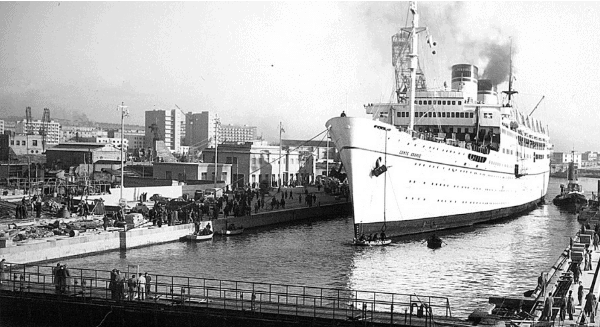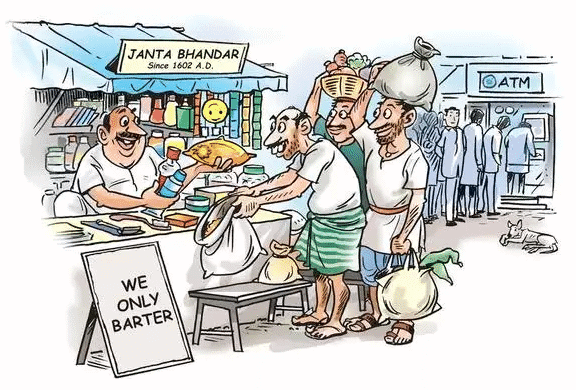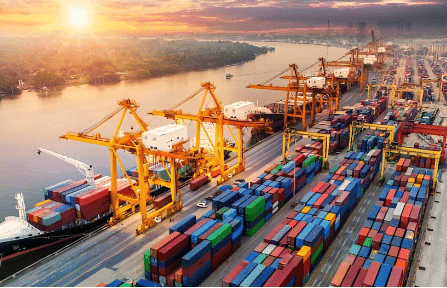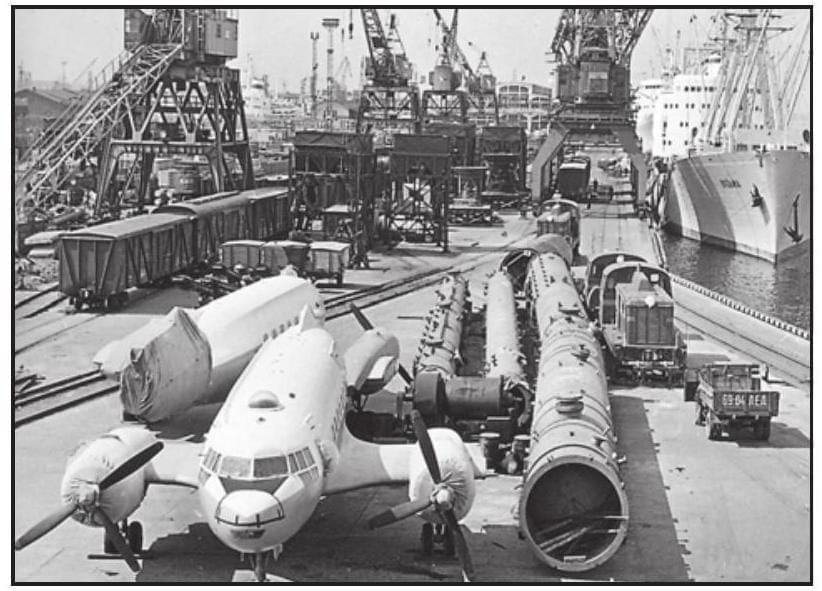International Trade Class 12 Geography
Introduction to International Trade
Trade, as you have learned in a previous chapter, refers to the voluntary exchange of goods and services between parties. It involves a seller and a buyer, and in some cases, people engage in barter, where goods are exchanged directly without the use of money. Trade is mutually beneficial for both parties involved.
There are two levels at which trade can occur: international and national. International trade involves the exchange of goods and services among countries across national boundaries. Countries engage in trade to obtain commodities that they cannot produce themselves or to acquire goods at a lower price from other countries.
In primitive societies, trade initially took the form of the barter system, where goods were exchanged directly. For example, if a potter needed plumbing services, they would have to find a plumber who needed pots and exchange their pottery for plumbing services.
Barter System in Contemporary India
One of the notable examples of the barter system still in practice in India is the Jon Beel Mela. This fair takes place every January in Jagiroad, located about 35 kilometers from Guwahati, following the harvest season. The Jon Beel Mela is unique as it features a large market where people from various tribes and communities come together to exchange their products directly, without the use of money.
Evolution of Trade: From Barter to Money
- The barter system faced several challenges, which were eventually addressed by the introduction of money. In ancient times, before the advent of paper and coin currency, rare objects with high intrinsic value served as money. These included items like flintstones, obsidian, cowrie shells, tiger’s paws, whale’s teeth, dogs’ teeth, skins, furs, cattle, rice, peppercorns, salt, small tools, copper, silver, and gold.
- The term “salary” is derived from the Latin word “Salarium,” which referred to payment made in salt. During that period, producing salt from seawater was not known, and rock salt was rare and valuable, making it a mode of payment.
History of International Trade
International trade refers to the exchange of goods and services across international borders, which has evolved significantly over time.
Ancient Times
- In ancient times, long-distance transport of goods was risky, limiting trade to local markets.
- People primarily spent their resources on basic necessities like food and clothing, with only the wealthy purchasing luxury items such as jewelry and expensive clothing.
- This led to the trade of luxury items being restricted to the rich.
The Silk Route
- The Silk Route was an early example of long-distance trade, connecting Rome to China over a 6,000 km route.
- Traders transported valuable commodities such as Chinese silk, Roman wool, and precious metals, with intermediate points in India, Persia, and Central Asia.
European Commerce
- After the fall of the Roman Empire, European commerce grew in the twelfth and thirteenth centuries with the development of ocean-going warships.
- This facilitated trade between Europe and Asia and led to the discovery of the Americas.
European Colonialism
- From the fifteenth century onwards, European colonialism began, introducing a new form of trade known as slave trade.
- The Portuguese, Dutch, Spaniards, and British captured African natives and forcefully transported them to the Americas for labor in plantations.
- Slave trade was a lucrative business for over two hundred years until it was abolished in Denmark in 1792, Great Britain in 1807, and the United States in 1808.
Post-Industrial Revolution
- After the Industrial Revolution, the demand for raw materials such as grains, meat, and wool expanded, but their monetary value declined relative to manufactured goods.
- Industrialized nations began importing primary products as raw materials and exporting value-added finished products back to non-industrialized nations.
- By the late nineteenth century, industrial nations became each other’s principal customers, diminishing the importance of regions producing primary goods.
World Wars and Postwar Period
- During World Wars I and II, countries imposed trade taxes and quantitative restrictions.
- In the postwar period, organizations like the General Agreement for Tariffs and Trade (which later became the World Trade Organization) helped reduce tariffs and promote international trade.
Reasons for the Existence of International Trade
- International trade exists because countries can produce goods and services more efficiently when they specialize in what they do best. When different countries focus on producing specific commodities or providing particular services, it leads to greater overall efficiency and benefits the global economy.
- This concept is rooted in the idea of comparative advantage, which means that countries can produce certain goods or services at a lower opportunity cost than others. International trade allows these countries to exchange their specialized products, creating a win-win situation for all parties involved.
In today's world, trade is fundamental to the global economic structure and is closely tied to the foreign policies of nations. With advancements in transportation and communication, countries are increasingly reluctant to miss out on the advantages of participating in international trade.
Basis of International Trade
(i) Difference in National Resources: National resources are distributed unevenly across the world due to differences in geology, relief, soil, and climate.
- Geological Structure: The geological structure of a region determines its mineral resource base. Topographical differences, such as the presence of lowlands and mountains, influence the diversity of crops and animals. Lowlands are more suitable for agriculture, while mountains attract tourists and promote tourism.
- Mineral Resources: Mineral resources are found unevenly around the globe. The availability of these resources is crucial for industrial development.
- Climate: Climate affects the type of flora and fauna that can thrive in a region. It also contributes to the diversity of products. For example, wool is produced in cold regions, while bananas, rubber, and cocoa are grown in tropical regions.
(ii) Population Factors: The size, distribution, and diversity of a country's population influence the type and volume of goods traded.
- Cultural Factors: Unique forms of art and craft developed in certain cultures are valued worldwide. For instance, China is known for its fine porcelain and brocades, Iran for its carpets, North African leatherwork, and Indonesian batik cloth.
- Size of Population: Densely populated countries tend to have large internal trade volumes but limited external trade, as most agricultural and industrial production is consumed locally. The standard of living affects the demand for higher-quality imported products; lower standards mean fewer people can afford expensive imports.
(iii) Stage of Economic Development: The nature of items traded varies at different stages of economic development. Agricultural countries typically exchange agro products for manufactured goods, while industrialized nations export machinery and finished products, importing food grains and raw materials.
(iv) Extent of Foreign Investment: Foreign investment can enhance trade in developing countries lacking the capital for industries such as mining, oil drilling, heavy engineering, lumbering, and plantation agriculture. By establishing these capital-intensive industries in developing countries, industrial nations create markets for their finished products and increase the volume of trade between nations.
(v) Transport: In the past, inadequate and inefficient transport limited trade to local areas, with only high-value items like gems, silk, and spices traded over long distances. However, advancements in rail, ocean, and air transport, along with improved refrigeration and preservation methods, have expanded trade spatially.
Trade Balance
Trade Balance tracks the total value of goods and services that a country imports and exports with other nations.
- When a country imports more than it exports, it has a negative or unfavourable trade balance. Conversely, when a country exports more than it imports, it enjoys a positive or favourable trade balance.
- Both the trade balance and the balance of payments are crucial for a country’s economic health. A negative trade balance indicates that a country is spending more on foreign goods than it is earning from selling its own goods abroad. This situation can lead to the depletion of the country’s financial reserves.
Types of International Trade
International trade can be classified into two types:
- Bilateral trade refers to trade between two countries who agree to exchange specific goods with each other. For example, Country A might agree to trade raw materials with Country B in exchange for other specified items.
- Multi-lateral trade involves trade between one country and multiple other countries. This can include granting the "Most Favoured Nation" (MFN) status to certain trading partners.
Case for Free Trade
Free trade, also known as trade liberalization, involves opening up economies for trade by reducing barriers such as tariffs. This allows goods and services from all over the world to compete with domestic products and services.
However, globalization and free trade can negatively impact developing countries by imposing unfavorable conditions and not providing a level playing field. While advancements in transport and communication have made it easier for goods and services to move quickly and widely, free trade should not only benefit rich countries but also allow developing countries to protect their own markets from foreign products.
Countries must also be vigilant about dumped goods, which are sold at lower prices and can harm domestic producers.
Dumping
Dumping is the practice of selling a product in two different countries at different prices for reasons unrelated to production costs.
Some reasons why dumping is becoming a serious concern among trading nations include:
- Market Distortion: Dumping can distort local markets by undercutting prices, making it difficult for domestic producers to compete.
- Economic Impact: It can harm local industries, leading to job losses and economic instability in the affected countries.
- Trade Relations: Dumping can lead to tensions between trading nations, as affected countries may retaliate with tariffs or other trade barriers.
- Regulatory Challenges: Identifying and proving dumping practices can be challenging for regulatory bodies, making it a complex issue to address.
World Trade Organization (WTO)
In 1948, the General Agreement on Tariffs and Trade (GATT) was established to reduce high customs tariffs and trade restrictions. In 1994, GATT was transformed into the World Trade Organization (WTO) to promote free and fair trade among nations.
The WTO sets global trade rules, resolves disputes between member nations, and covers trade in services and intellectual property rights. However, it has faced criticism for widening the gap between rich and poor nations and prioritizing the interests of influential countries. Critics argue that the WTO ignores important issues like health, workers' rights, and the environment.
WTO Headquarters and Membership
- The WTO is headquartered in Geneva, Switzerland.
- As of December 2016, 164 countries were members of the WTO, with India being a founding member.
Regional Trade Blocs
- Regional Trade Blocs have emerged to promote trade among geographically close countries with similar trading items and to reduce trade restrictions in the developing world. Currently, 120 regional trade blocs account for 52% of global trade. These blocs arose in response to the global organizations' failure to facilitate intra-regional trade effectively.
- Although regional blocs eliminate trade tariffs among member nations and encourage free trade, future scenarios may pose challenges for free trade between different trading blocs.
Concerns Related to International Trade
- International trade is beneficial when it leads to regional specialization, increased production, improved living standards, global availability of goods and services, price and wage equalization, and the spread of knowledge and culture.
- However, it can be harmful if it causes dependence on other countries, uneven development, exploitation, and commercial competition that may lead to conflicts. Global trade impacts various aspects of life and contributes to the rapid depletion of natural resources, affecting the environment and public health.
- The expansion of multinational corporations in sectors like oil, gas, mining, pharmaceuticals, and agribusiness, without adhering to sustainable development norms, exacerbates pollution and environmental degradation. If profit-driven motives overshadow health and environmental concerns, it could result in severe future consequences.
Gateways of International Trade
Ports
Ports and harbours are the main gateways for international trade. They are where cargo and travellers are transferred from one part of the world to another.
- Ports offer essential services such as docking, loading, unloading, and storage for cargo. To provide these services, port authorities ensure that navigable channels are maintained, and they arrange for tugs, barges, labour, and management.
- The significance of a port is measured by the volume of cargo and the number of ships it handles. The amount of cargo processed by a port reflects the development level of its surrounding area (hinterland).

Types of Port
Ports are typically classified based on the types of traffic they handle. Here are the different types of ports according to the cargo they handle:
- Industrial Ports. These ports specialize in bulk cargo such as grain, sugar, ore, oil, chemicals, and similar materials.
- Commercial Ports. These ports handle general cargo, including packaged products and manufactured goods. They also manage passenger traffic.
- Comprehensive Ports. These ports handle both bulk and general cargo in large volumes. Many of the world's major ports fall into this category.

Types of Ports Based on Location
Inland Ports. Inland ports are situated away from the sea coast and are connected to the sea via a river or a canal. They are accessible to flat-bottomed ships or barges. Examples include:
- Manchester. Linked by a canal.
- Memphis. Located on the Mississippi River.
- Rhine Ports. Such as Mannheim and Duisburg, located along the Rhine River.
- Kolkata. Situated on the Hooghly River, a branch of the Ganges River.
Out Ports. Out ports are deep-water ports located away from the main ports. They serve as receiving points for large ships that cannot approach the parent ports due to size restrictions. A classic example is the relationship between Athens and its out port, Piraeus, in Greece.
Types of Ports Based on Specialized Functions
Oil Ports. These ports are involved in the processing and shipping of oil. They can be further categorized into:
- Tanker Ports. Such as Maracaibo in Venezuela, Es Sukhairah in Tunisia, and Tripoli in Lebanon.
- Refinery Ports. Like Abadan on the Gulf of Persia.
Ports of Call. These ports originally developed as stopping points on major sea routes where ships would anchor for refueling, watering, and provisioning. Over time, they evolved into commercial ports. Examples include Aden, Honolulu, and Singapore.
Packet Stations (Ferry Ports). Packet stations, also known as ferry ports, are exclusively focused on transporting passengers and mail across short distances over water. These stations are typically found in pairs, facing each other across the water body. An example is the pair of Dover in England and Calais in France, across the English Channel.
Entrepot Ports. These ports serve as collection centers where goods from various countries are brought for export. Examples include:
- Singapore. An entrepot for Asia.
- Rotterdam. An entrepot for Europe.
- Copenhagen. An entrepot for the Baltic region.
Naval Ports. Naval ports have strategic importance and serve warships, providing repair workshops for them. Examples in India include Kochi and Karwar.
|
50 videos|273 docs|37 tests
|
FAQs on International Trade Class 12 Geography
| 1. What are the recent trends in the composition of India's exports? |  |
| 2. How has the direction of trade changed for India in recent years? |  |
| 3. What role do sea ports play in India's international trade? |  |
| 4. How do airports contribute to international trade in India? |  |
| 5. What challenges does India face in enhancing its international trade? |  |






















